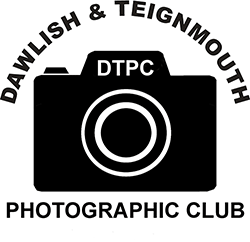Once upon a time, I crouched in the cupboard under the stairs in my parent’s tiny house bathed in red light as I struggled to manipulate an enlarger constructed from an oil tin, 60 w bulb and the lens from an old folding camera.
I am glad no one told me that it was impossible to get a decent print without the latest Leica machine in a state of the art laboratory.
I had fun and the prints I achieved were mine (not the local chemists).
I also learnt how to maximise my success by working round the obvious physical problems.
It was a valuable lesson. Don’t assume that throwing cash at a problem will necessarily get you the result you desire.
So, here are some modern fallacies:
I can’t get good images if I set my camera to automatic.
The camera has a mini-computer inside it which has cost millions to develop specifically so it will maximise the chance of getting a good image.
The chance of capturing a fleeting moment is enhanced by not having to fiddle with half a dozen buttons and a focus ring.
The sensor in a camera has wide sensitivity. If it gets it wrong, there is wiggle room to put in right later.
As a proper photographer, I must print all my own pictures.
Joe Cornish, the successful landscape photographer, passes his pictures to an associate who prints them for him.
There is tremendous competition between companies with the latest in high tech printers to get your business. The quality of their printing is superb. You can choose to spend a lot (Whitewall are superb) or a little (Snappy Snaps) and will get perfectly acceptable results. Its worth sticking with one company especially, should you wish to do so, you can adapt your computer settings to give the result you want.
I used to use Posterprint for several years because I could get 6 images onto an A1 sheet (£15)- no judge ever commented on the quality of the printing (though they did have ‘constructive’ comments on the actual images)
I don’t have a printer with six shades of grey, so I can’t print monochrome.
I don’t have £1000 to buy a printer I will use six times per year.
Use the printer you have to do the best you can. No one says monochrome has to be exactly black and white. You can always give the print a pale colour such as sepia (yellowy-brown), selenium (blue) or whatever you like. I suggest you avoid anything magenta unless you really like it.
Set the printer to ‘grey scale’ and make sure the printer driver is up to date.
Enjoy fiddling around until you get the result you want. You should use the inks designed for the printer and, to begin with at least, the matching paper. Lustre is a sensible choice of paper finish for beginners (not matte).
You have to use Lightroom, Photoshop, Affinity etc.
No, you don’t! But it is fun to play with them.
Choose something as simple as possible to begin with. Apps on your phone are a good starting point- progress to something chewier later when you can confidently adjust images on a small screen. I started with Photoshop Elements Version 1 many years ago, pre-smart phones, when all it could do was crop the image, adjust the exposure and make minor alterations. I used it for so long, that the next one I bought was version 10 (9 years later).
There are plenty of free or very cheap options to use when you start.
My camera only takes jpeg images so they will be poor quality.
Jpeg stands for joint photographic experts group. These experts specifically chose a standard way of reducing the size of photographic files to give the best results. They are not poor quality. Keep taking them.
When you send an image to a printer (at home or in a shop) it will almost certainly be a jpeg.
The reason for taking photographs in RAW (as in uncooked) is to have more flexibility to play with them in your computer.
Camera companies spend millions in research to make sure their jpegs are the best and fit their camera precisely, correcting errors such as lens distortion or vignetting. Why wouldn’t you use all that expertise?
Only expensive cameras/lens will get good results.
Only good photographers will get good results.
Choose one camera and one lens (a phone is fine) and get to know them well before you decide to buy something additional and ‘better’.
Some of the most famous photographs in the world were taken with equipment so basic, inaccurate and distorting we would stick it in the black bin. It might not even have been the best available at the time - but the photographers certainly were.
I have to be an expert to take good photographs.
Novice photographers and children often win competitions.
Experienced photographers have more success because they have practised for longer.
It’s only a good image if you think it is. What others think of it, is secondary.
In our Camera Club we don’t usually discuss equipment. We probably talk about post-processing a bit more and we concentrate on the images for most of the time.
Whatever your level is, the best way to enjoy the hobby is to go out with a camera and use your imagination!
Nigel West
